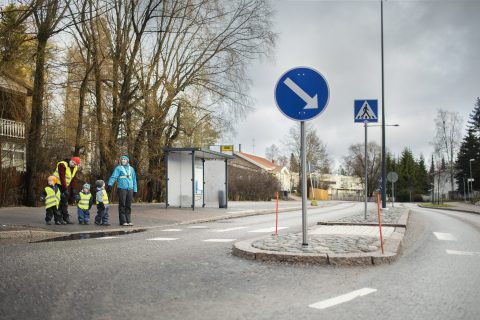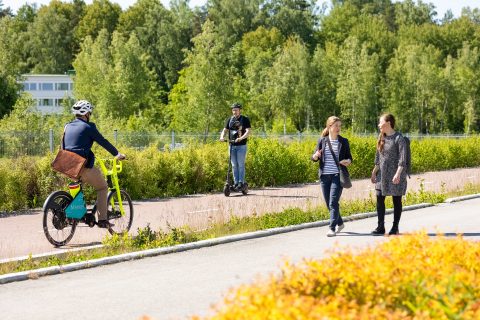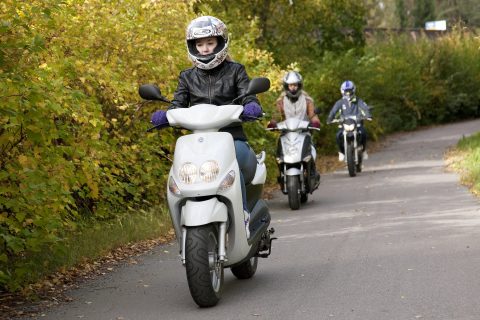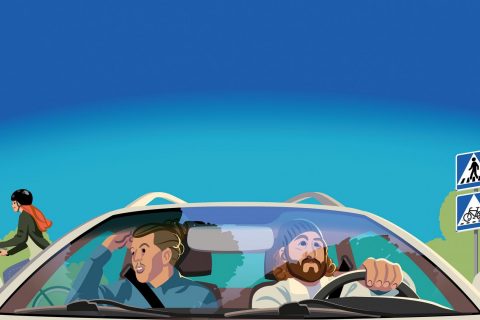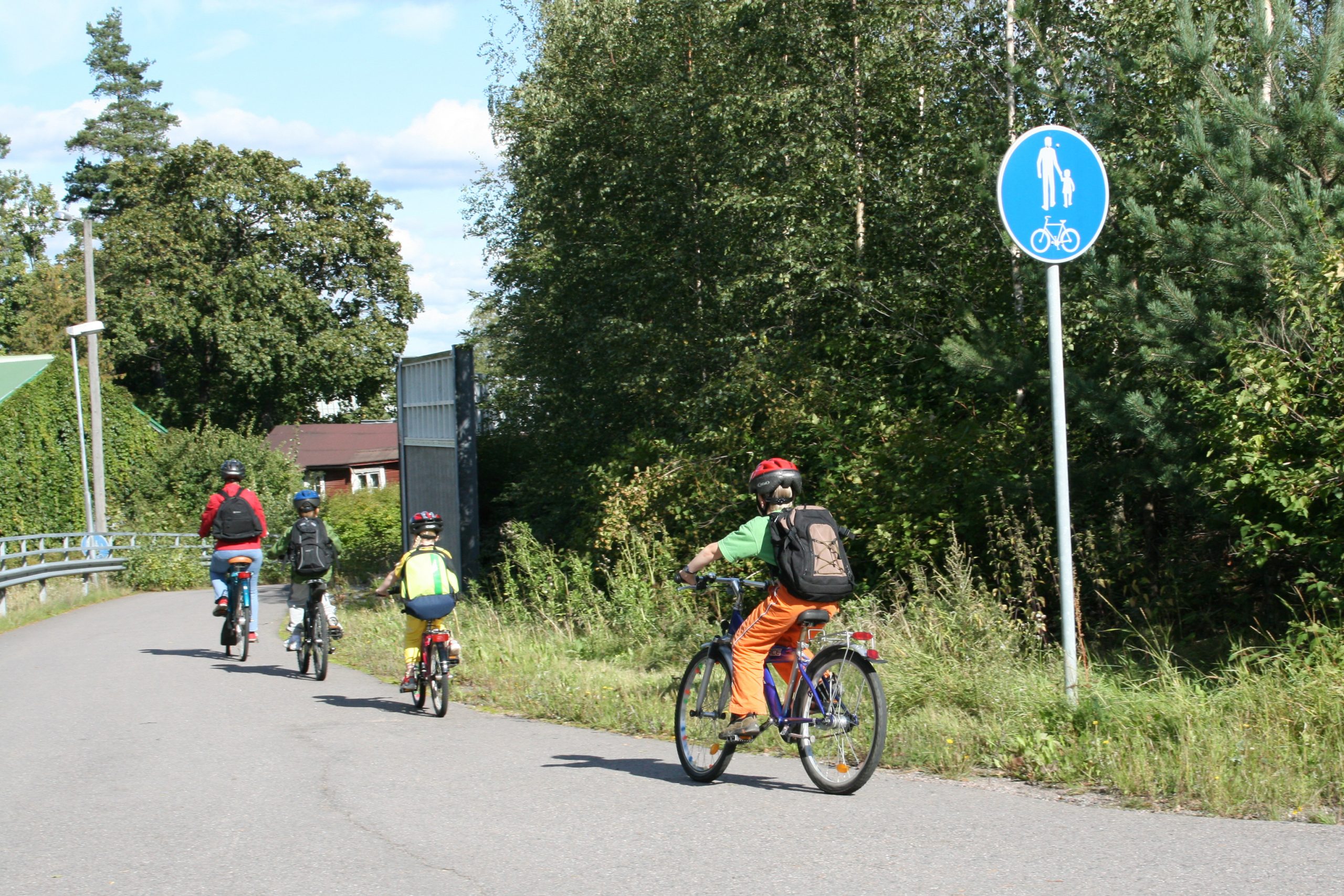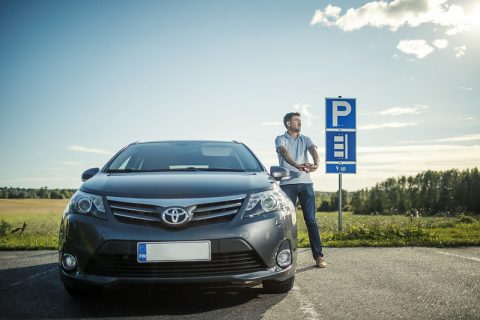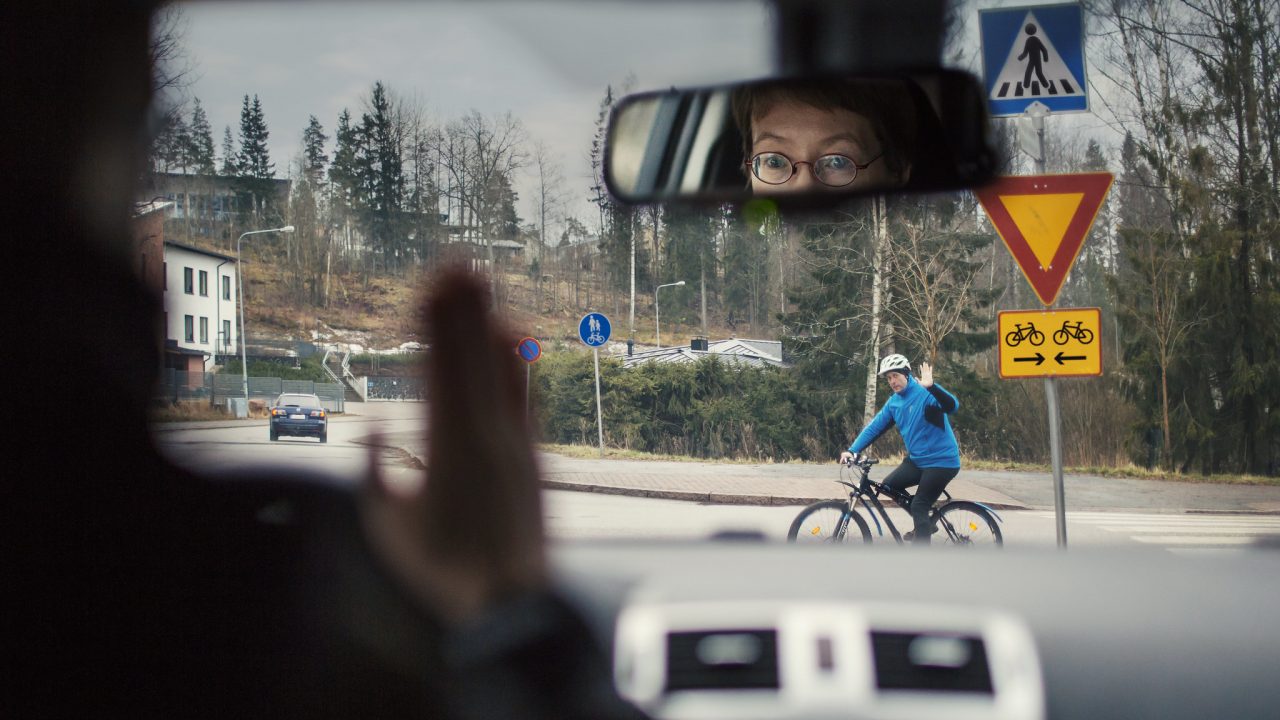
Interaction in traffic: basics of traffic behaviour
People’s behaviour in traffic is based on traffic regulations, interaction and the predictability of their own actions and the actions of others. In traffic, we constantly interpret other people’s behaviour, and many of our actions have also become automatic habits. The most irritating situations in traffic are surprising — when something happens against our expectations.
Why are traffic rules required in traffic?
The human system of observation and reaction works best at walking speeds. At walking speed, it is possible to stop immediately and change direction quickly. As speeds and traffic volumes increase, reactions alone are no longer sufficient to guarantee safe movement. This is why joint agreements have been created for moving in traffic.
Traffic regulations and norms aim to support people’s correct interpretations and anticipation in traffic. Failure to comply with the agreements will make it more difficult to interpret traffic. Because the majority of traffic circulation is based on expectations supported by regulations, people are most irritated by surprises in traffic. In other words, situations where expectations are not met.
Transport is a social network that requires interaction
Transport is also a social network in which you can choose whether you as a member of the network are involved in promoting good or bad things. Our own actions often also reflect back on us: safe choices also improve our own safety. Interaction is needed in transport, as in other networks.
Traffic interaction is characterised by:
- Speed. In traffic, individual encounters are often brief and rapid and may be over in a second.
- Encounters. Traffic consists of different travellers who are protected in various ways and who move at different speeds. From time to time, however, their paths cross.
- Anonymity. For example, it is often not possible to distinguish the driver’s features inside the car.
- Liveliness. Business trips, for instance, often take place in a hurry and during peak times, when traffic is lively and stressful.
- Differences. Everyone is moving in traffic regardless of age, competence or resilience.
People largely act in an automated way, but habits can be changed
Approximately 40 per cent of people’s daily activities are carried out routinely without actual decision-making. In practice, this means that in an identical or similar situation, action is taken in the same way as before. Typical routines in traffic are, for example, the choice of routes and modes of transport.
Routines are useful for human survival, as automated habits release resources for other activities. If a conscious decision had to be taken on each of the issues ahead, people would quickly be overburdened.
When repeated daily, a habit takes approximately one month to take root, depending on the complexity of the action. By learning new habits that will gradually become automatic, the amount of resources the habits require is reduced.
The model of changing habits is clear. Everything starts with identification:
- Identify the routine: “I constantly speed a little”.
- Test what works as a reward: “I feel like I’m getting there faster.”
- Detect the underlying hint that leads to the action: “Feeling busy.”
- Make a plan for change: “I’ll leave five minutes earlier.”
Emotions in traffic: anger can be controlled
Emotions are part of the human data-processing system. The feeling often comes on quickly and automatically as a result of some external stimulus. One important task of emotions is to act as an alarm system that focuses on changes in the environment.
If the alarm system is continuously triggered, alertness usually increases, and the situation is experienced as stressful. Particularly in a traffic jam, alertness may be high due to the rapid pace of the traffic. In this case, even the smallest unexpected new surprise will lead to irritation.
It is not necessarily possible to prevent such emotions, but instead, we can influence the duration of the emotions and how we allow them to affect our behaviour. The surge of emotion often passes quickly if the problem is not chewed over. A more conscious interpretation of the situation will follow the surge of emotion.
Particularly in traffic, irritation or other similar emotions must not be allowed to turn into action.
Anger in traffic, road rage or other intense reactions in traffic can and should be prevented. In addition to safety, it also has a good effect on our daily mental state.
Here are some examples of how to control irritation in traffic:
- Breathe deeply and focus on breathing instead of the cause of irritation, without forgetting traffic.
- Count to ten.
- Focus on your own movement instead of what others are doing. Moving attention away from the subject of irritation quickly ends the surge of emotion.
- Instead of getting angry, try to interpret other people’s behaviour more positively — with humour, for example.
- Challenge your first interpretation of the situation — what if it was unintentional?
- From the start, decide to move calmly and in cooperation with others. In addition to improving safety, you set a good example for others.
- Avoid moving at times and in traffic situations that you consider stressful already in advance.
Other people’s actions in traffic can be interpreted more positively
When driving, most common communication cues, such as gestures, expressions, sounds and phrases, remain invisible, making it very difficult to interpret the content and tone of communication. Pedestrians and cyclists, whose faces are easier to see, are often described in a more humane way than, for instance, those travelling inside a car.
However, people constantly interpret other people and their actions. The less information available, the more likely we are to interpret other people’s actions based on classifications. The interpretation may be based on very simple categories such as vehicles, car brands, driver appearance or mode of transportation. This repeatedly causes misinterpretation.
In other words, other people moving in traffic are constantly associated with features that nothing can really be known about. Interpretations of the causes of other people’s actions are referred to as attributions.
People also tend to interpret their own actions as a result of the situation, but the actions of others as the individuals’ characteristics. In other words, things simply happen to me, but other people are simply like that. This is called an attribution error.
When interpreting other people’s actions or mistakes, we also feel that they are directed against us, even though we do not have evidence that other people have even noticed us.
In the general discussion, misinterpretations are highlighted in classifications of different modes of transport: cyclists are cyclists and motorists are motorists, even though the same people sometimes use different modes of transport. The chosen means of transport seems to prevent people from seeing the person behind people moving in traffic.
Interaction in traffic starts with our own actions
- Attentiveness: focus on moving when in traffic, not on additional tasks such as the smartphone.
- Anticipation: anticipate the actions of others and act predictably yourself.
- Signalling: signal what you are going to do on time and clearly.
- Regulations: follow traffic regulations to help others anticipate and interpret your behaviour correctly.
- Situational speed: keep the situational speed sufficiently low in order to have time to react to changes in the environment.
- Safety equipment: use safety equipment in case of accidents.
- Humanisation: remember that people moving around you are also people: somebody’s sister, brother, child, father or mother.
